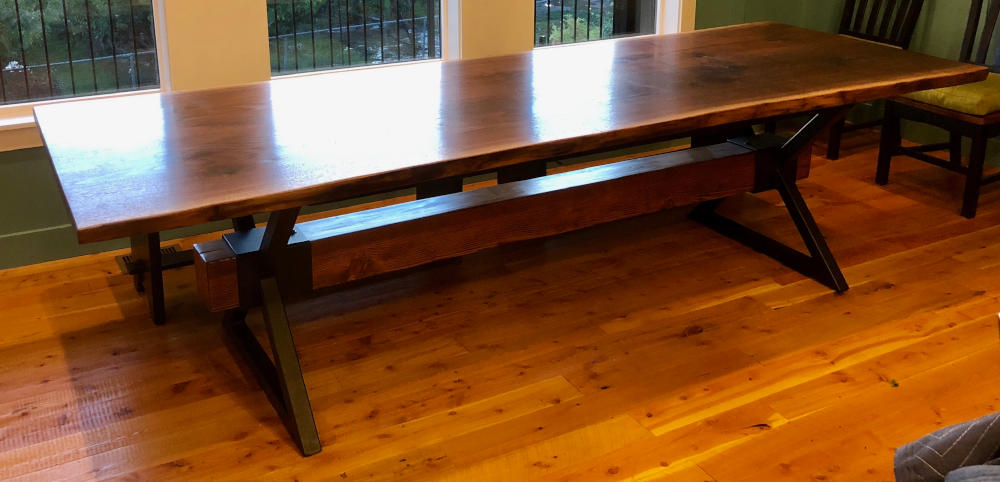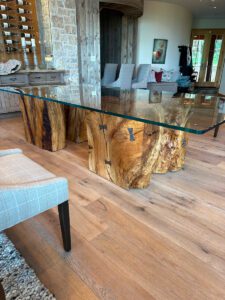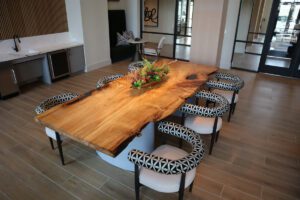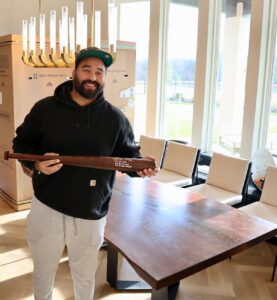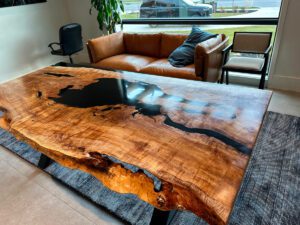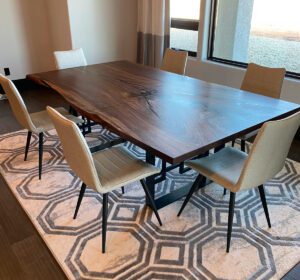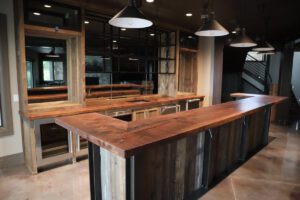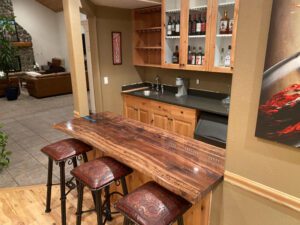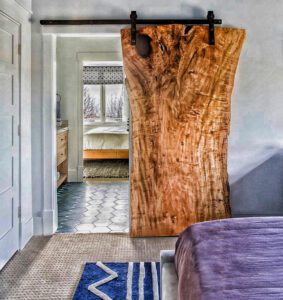When it comes to woodworking, the smallest oversight can cost an entire project. For instance, a slab of wood that isn’t kiln dried will most likely warp at some point. That’s exactly what happened to this client’s walnut dining table that had unfortunately warped and was in need of a transformation.
Kiln drying is the process of drying a slab of wood in a kiln — a giant oven designed for drying wood — at a temperature, humidity level, and airflow that you can control. While you can certainly air dry wood, it takes significantly longer and leaves a lot up to chance when it comes to removing all the moisture.
The end result with air drying is typically warped wood — which doesn’t bode well after a customer has paid hundreds (or thousands) of dollars on a custom piece. Kiln drying, on the other hand, guarantees all the moisture is removed from the wood, so your custom-built piece looks as good as new in five, 10, or even 20 years.
Here’s how I was able to transform this client’s warped walnut dining table into a timeless custom piece.
The Project
This particular client had a beautiful walnut dining table that had been custom built for them. Unfortunately the table builder was inexperienced and used wet lumber that wasn’t kiln dried. After six or seven months of them having the table in their home, the two bookmatched slabs it had been built from started to twist.
Naturally, a twisted table isn’t exactly functional, and given that the clients had had this eight-foot table built with the intention of hosting their children and grandchildren for the holidays, this walnut dining table had to lay flat. So, I set up an appointment to look at the slab, and after assessing the situation, we decided it was too warped to be repaired.
On one end, the slabs had split apart, leaving an inch gap between them. Each time they tried to screw down the (extremely heavy) base, the screws would rot because the wood was wet. That meant that first and foremost, we needed to replace the slabs.
The Process
Unfortunately, not much of the original walnut dining table was salvageable. The slabs were so twisted that we were only able to turn them into benches and live-edge shelving; by cutting the slabs short enough and kiln drying them to fully remove the remaining moisture, I was able to flatten the pieces — and ensure they’d remain flat over time.
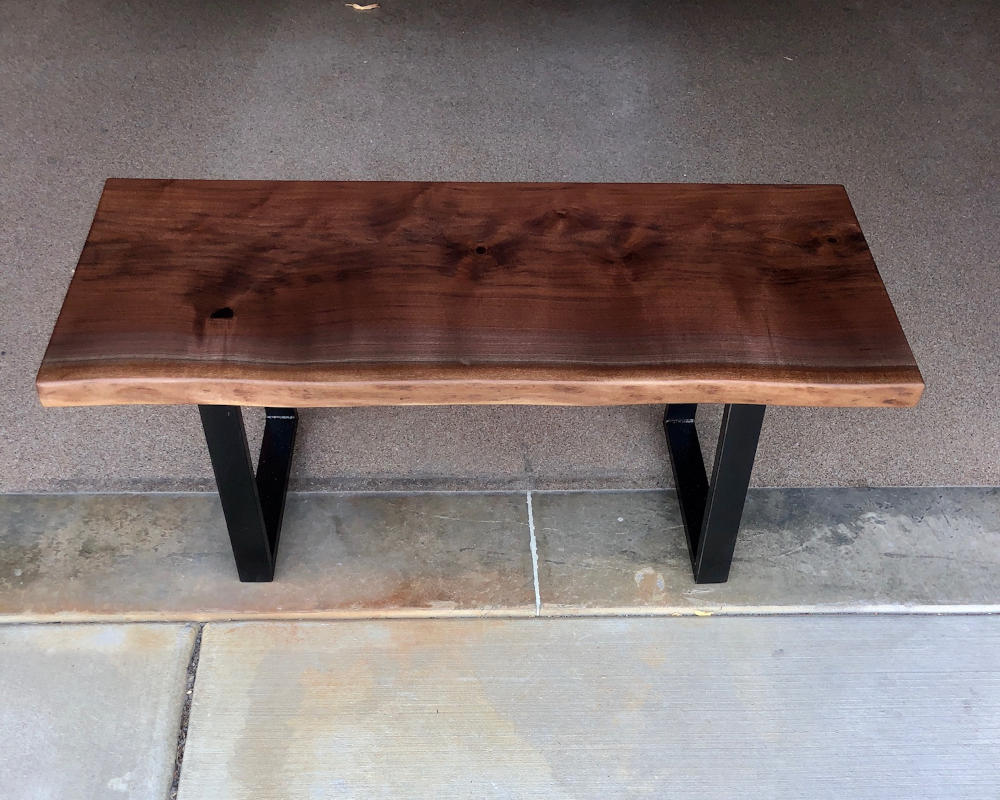
For the client’s new-and-improved walnut dining table, I presented them with a beautiful set of Pennsylvania walnut slabs from my inventory that were sourced from my Amish supplier’s farm.
We opted to extend the table from eight feet to 10 feet to better suit their needs when the family gathered together. I used the heavy industrial base they had made, secured the new top, and placed levelers in the bottom of their base.
Finally, I connected everything with brass inserts that won’t deteriorate over time.
The Walnut Dining Table Transformation
I sent the husband progress photos every step of the way because he wanted to surprise his wife with the end result and the benches. She was so happy to see the new walnut dining table and benches that she cried.
As I do with every client, I provided them with the proper cleaning and care products so there would be no questions about how to maintain my pieces. Depending on the type of wood and intended use, care instructions vary for each piece I make, and I want to be sure my clients can keep their custom pieces within the family for years to come.
Custom-built furniture is an investment, so you want to make sure you’re working with an experienced woodworker. Contact me to discuss the project you’ve been dreaming of.

